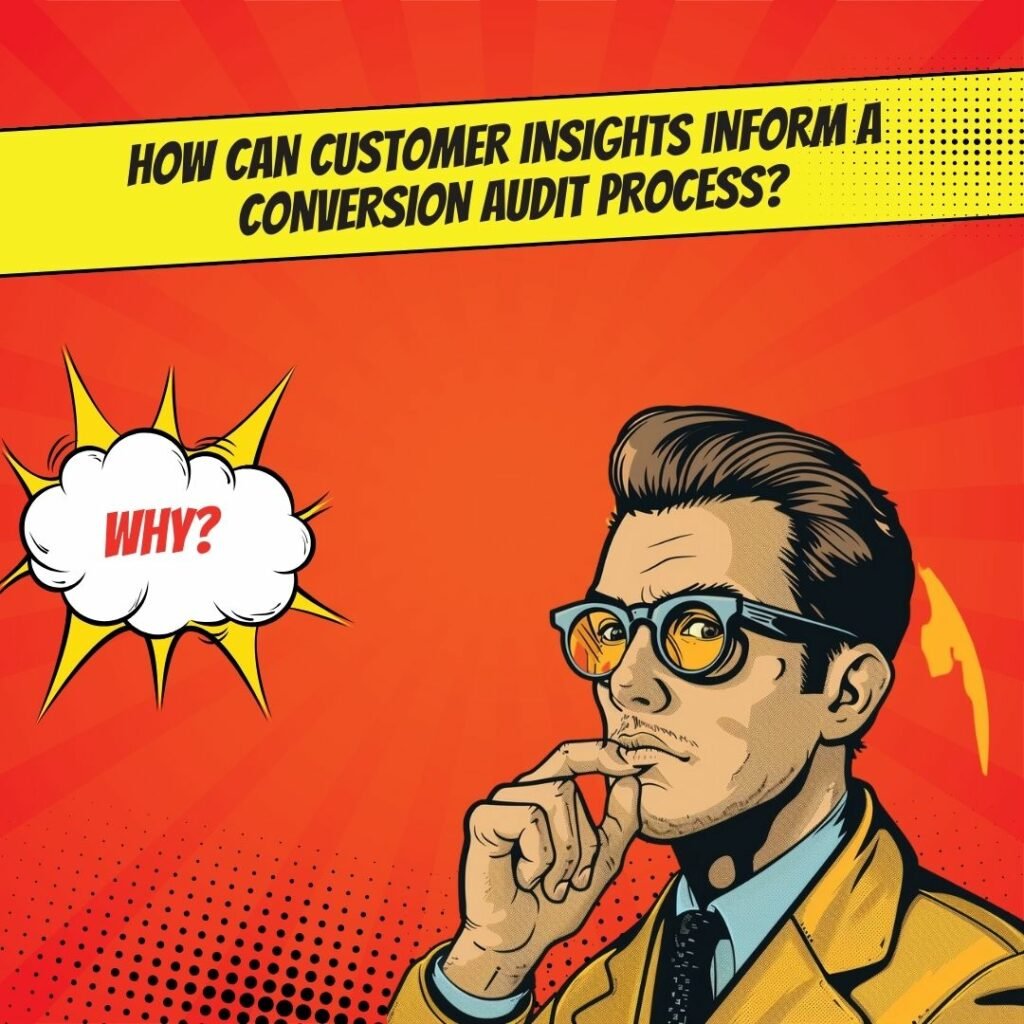Key Takeaways
✅ Gather Comprehensive Data: Discover how usability testing, combined with analytics and customer feedback, can unveil critical insights to enhance your website's user experience. Did you know that enhancing UX design can lead to a conversion rate increase of up to 400%? Harness these tools to understand user actions and create a streamlined path to conversion.
✅ Analyze and Prioritize Findings: New data shows informed data analysis can bolster the success of optimization efforts. By scrutinizing user behavior patterns and prioritizing issues, you can tackle conversion obstacles systematically, making your site not just an online space but a conversion powerhouse.
✅ Implement and Refine: Continuous improvement is key to conversion success, with A/B testing playing a crucial role in the process. Implementing data-driven changes can lead to significant improvements, as businesses have observed a 20-30% uplift in conversions post-optimization.

Introduction
Have you ever wondered why some websites seem to have a golden touch, turning clicks into customers with seemingly effortless grace? At the heart of their online success lies a powerful strategy: the Comprehensive Conversion Audit utilizing customer insights and usability testing. In today's digital marketplace, understanding the subtleties of customer behavior is not just an advantage; it's a necessity.
Setting clear objectives and fully comprehending your target audience form the foundational pillars of this process. By blending both Quantitative Research and Data Analysis with Qualitative Research and Usability Testing, businesses can get an unparalleled view of their customer's journey. Surveillance of analytics can reveal where users hesitate or abandon their carts, and a deep dive into real user experience pinpoints exactly why they disengage.
Are you ready to join the ranks of online businesses that have mastered the art of conversion? This article holds the keys to unlocking this realm. We're not just talking about simple tweaks here. We're pulling back the curtain on actionable insights and groundbreaking solutions that could dramatically lift your revenue, ROAS, and ROI. Stay tuned, as you're about to embark on a transformative journey that promises to revolutionize your online presence.
Top Statistics
| Statistic | Insight |
|---|---|
| Conversion Rate Optimization (CRO) Audit Frequency: Regular CRO audits are recommended every 6-12 months. | Staying on top of CRO audits is essential for any business that wants to keep improving its website's performance and stay ahead of the competition. |
| User Experience (UX) Impact: High correlation between UX performance and conversion rates. | Usability and user experience are crucial – if your site isn't user-friendly, you're likely losing out on potential sales. |
| Mobile Optimization: Prices specific UX issues significantly impact mobile conversions. | With the skyrocketing number of mobile shoppers, your mobile site needs to be just as good, if not better, than your desktop version. |
| Conversion Rate Optimization ROI: CRO audits can improve ROI by enhancing conversions without a higher budget. | Invest smartly—optimizing your site can lead to better returns without splurging more on your marketing budget. |
| Conversion Rate Improvement: Identifies website friction points, leading to improved conversion rates. | Knowing where your website stands and what's holding your customers back can be the first step to boosting your sales. |
What is a Conversion Audit and Why It Matters
Have you ever wondered why some visitors on your website leave without making a purchase or taking action? This is where comprehensive conversion audits come in—meticulous evaluations checking every aspect of your site from a customer's perspective. Their purpose is not just to pinpoint shortcomings but to guide improvements that enhance the user experience. This sort of deep-dive helps businesses understand which parts of their site work well and which ones are like invisible roadblocks to customers trying to reach the checkout line. By identifying these pain points, businesses can create a smoother, more enjoyable journey for their users. Ultimately, a thorough conversion audit can lead to higher engagement and increased sales.
Setting Clear Objectives and Knowing Your Audience
Before diving into a conversion audit, you need clear objectives. Are you trying to bump up those sales figures? Maybe you want more people to sign up for your newsletter. Understanding what you're aiming for is paramount. Equally crucial is having a handle on who's visiting your site. Demographics, interests, even their frustrations—knowing your target audience can revolutionize how you approach improvements. This isn't about guessing what your customers want; it's about grounding every decision in solid data. Having precise goals and a clear understanding of your audience helps in crafting more effective strategies. This targeted approach ensures that your efforts are not wasted but are directed towards meaningful improvements.
Using Data to Understand Your Site’s Performance
When was the last time you took a good, hard look at your website analytics? Quantitative research through analytics tools can reveal a lot about where your site is losing potential customers. It's like a high-powered microscope for your website, showing you the exact spot where visitors click away or lose interest. Whether it’s a troublesome checkout page or a confusing navigation menu, establishing baseline metrics gives you a clear starting point for getting better. These insights allow you to prioritize changes that will have the most significant impact. By focusing on data-driven decisions, you can systematically improve your site’s performance.
Listening to Your Users Through Qualitative Research
Numbers tell only half the story. Real insight comes from understanding the human side of the equation. This means talking to the people who use your site. Conducting user testing provides a window into the genuine experiences of your customers, shedding light on what makes them happy, frustrated, or just plain confused. They are the judge and jury of the user experience, and their feedback is priceless. Tools like session recordings and heatmaps take you a step closer to seeing your website through your users' eyes—literally. By combining qualitative and quantitative data, you get a holistic view of your site’s performance. This comprehensive approach ensures that all aspects of user experience are considered.
Implementing Changes and Monitoring Results
After identifying what works and what doesn't, it's time to roll up your sleeves. Implementing changes is a team effort, involving designers, developers, and marketers, all working together to enhance the customer journey. But the job doesn't end with making these changes. Monitoring performance is vital for understanding the impact of your updates. Are they working as you hoped? Data doesn't lie. By keeping a vigilant eye on performance, you can iterate and adapt, shaping your website into the conversion machine you know it can be. Continuous monitoring allows for ongoing optimization and refinement. This proactive approach helps in maintaining and improving your site’s effectiveness over time.
The Importance of Regular Conversion Audits
A one-off audit is like a snapshot; it captures a moment in time but doesn't give you the full story. Regular audits, however, are the force behind ongoing optimization. They're your growth engine, propelling your business forward with continual improvements based on up-to-date insights. Regularly refreshed audits ensure your website does not fall behind but rather stays ahead of the curve, offering a customer experience that's always a cut above the rest. Consistent auditing helps in identifying new opportunities and addressing emerging challenges. This ongoing process is key to sustaining long-term success and growth.
The Importance of Conversion Audits
Running a website without regular conversion audits is like driving a car with a fogged-up windshield. You might be moving forward, but are you heading in the right direction? These audits provide clarity, ensuring that every element of your site contributes to a stronger connection with your visitors—and a healthier bottom line for your business. By regularly reviewing and optimizing your site, you can stay responsive to user needs and market changes. This strategic approach helps in maintaining a competitive edge and achieving continuous improvement.
AI Marketing Engineers Recommendation
Recommendation 1: Leverage Behavioral Analytics for In-Depth Customer Understanding: Examine user behavior through tools like heatmaps, session recordings, and click tracking. Data shows that businesses that utilize these tools can see up to a 30% uplift in conversion rates. Tracking where users drop off or get stuck provides actionable insights to streamline the customer journey. By deeply understanding how customers interact with your website, you can make informed decisions to remove friction and improve the Comprehensive Conversion Audit Utilizing Customer Insights and Usability Testing process.
Recommendation 2: Implement A/B Testing to Drive Data-Centric Website Optimization: Use A/B testing to make data-backed decisions on webpage layouts, call-to-action button placement, and copy effectiveness. Statistics indicate that 44% of companies now use A/B or split testing software. Align this testing approach with customer feedback to validate changes that truly resonate with your audience. Stay ahead of the curve by not just following current trends but validating what works specifically for your audience, leading to better engagement and higher conversions.
Recommendation 3: Adopt User Experience (UX) Best Practices Aligned with Customer Feedback: Customer insights and usability testing should inform your website's UX design. Practical applications like UserTesting provide real-time user feedback, allowing for quick iterations and enhancements. With 88% of online consumers less likely to return to a site after a bad experience, integrating continuous user feedback into UX design is critical. Enhance your Comprehensive Conversion Audit Utilizing Customer Insights and Usability Testing by prioritizing user-centric design principles, thus ensuring a seamless and enjoyable experience for your visitors.
Relevant Links
- From Hangul to High Rankings: Mastering Korean Keyword Optimization
- German E-Commerce Laws and Regulations: A Guide for Businesses
- Data-Driven Marketing in China: Consumer Insights for Success
- Influencer Insights: Trends and Tactics for Indian Influencer Marketing
- Digital Payments in Russia: Navigating the Changing Landscape
Conclusion
In wrapping up, we've peeled back the layers on the importance of Comprehensive Conversion Audits utilizing customer insights and usability testing. This isn't just about numbers; it's about understanding the heartbeat of your website – the customer journey that can make or break the success of your online presence. By delving into quantitative and qualitative analysis, businesses can pinpoint exactly where customers are slipping away and why. But it's what you do with this information that truly matters.
Implementing the improvements identified during the audit can significantly enhance user experience, which in turn can lead to measurable lifts in conversion rates. And the cycle shouldn't stop there; keeping an eye on performance and being ready to tweak and change as you gather more data is crucial. It's a bit like caring for a garden – regular maintenance can see it flourish beautifully over time.
To sum up, regular Conversion Audits are not just beneficial; they're essential in today's digital landscape. They offer a roadmap for businesses to not only understand their customers better but also to create a website that feels like a breeze to navigate. How often are you taking the pulse of your site's user experience? Are you truly listening to what your customers are telling you through their actions – or inaction? Now is the time to use these insights, make the necessary adjustments, and watch as your digital garden blooms.
FAQs
Question 1: What is a Comprehensive Conversion The Audit?
Answer: Imagine you're a detective looking at every nook and cranny of your online store. You're trying to figure out why visitors aren't becoming customers. That's what a comprehensive conversion audit is – your detective work. You're digging deep into user experience and finding those sneaky little spots where customers are dropping off or getting confused. It's all about identifying how to make their journey from "just looking" to "take my money" as smooth as butter.
Question 2: Why is a Comprehensive Conversion Audit Important?
Answer: Let's face it, we all want to make more money. A comprehensive conversion audit is like a treasure map—it shows you where the gold is buried, but instead of gold, it's opportunities to get more people to hit that 'buy' button. It's about getting down to the gritty roots of what's stopping people from making purchases and fixing it. It's like patching up leaks in a boat – it keeps you afloat and sailing towards success.
Question 3: What are the Key Components of a Comprehensive Conversion Audit?
Answer: Think of a conversion audit as a big, hearty stew. You've got several key ingredients like usability testing (that's where you watch real people try to use your site), customer feedback through surveys and interviews, a deep dive into your site's analytics, a critical eye against best practice principles, studying your competition, and a pinch of A/B testing to taste the difference between two versions of a single element. Mix them all together, and you've got yourself a recipe for improvement.
Question 4: How Do You Conduct Usability Testing?
Answer: Usability testing is like a sneak peek into someone's thought process. You give a bunch of people some tasks to do on your site and watch what they do, where they struggle, and what they breeze through. It can be as simple as sitting next to someone or as fancy as using software to track their every click and scroll. The goal is to get inside their heads and see your site through their eyes.
Question 5: What is the Role of Heuristic Evaluation in a Comprehensive Conversion Audit?
Answer: Heuristic evaluation is sort of your checklist against good design practices. It's not about what you think or what your users say; it's about lining up your site against proven principles like how easy it is to navigate or how clear your information is. It's like a quick health check-up for your site's user-friendliness.
Question 6: How Do You Analyze and Interpret Data from a Comprehensive Conversion Audit?
Answer: So, you've collected all this data, and now you're swimming in numbers and comments. Analyzing and interpreting this pile of information is about spotting patterns – like where people are dropping off or what's making them click. It's detective work, where you piece together clues to figure out the full story of why users are acting the way they are.
Question 7: What Tools Are Needed for a Comprehensive Conversion Audit?
Answer: Just like a craftsman needs his tools, you need some trusty software to help you audit. Google Analytics is like your magnifying glass, peering into the traffic patterns. Heatmap tools such as Hotjar show you hot spots of activity on your pages. User testing software, survey tools, and advanced analytics platforms like Kissmetrics are all in your toolkit as well, each playing their part in drawing a picture of user behavior.
Question 8: How Often Should a Comprehensive Conversion Audit Be Conducted?
Answer: Think about how often you'd tune-up your car or go for a health check-up. Regular, right? That's how you should treat your conversion audit - as a regular check-in to make sure everything's running smoothly and to keep up with the ever-changing online shopping behaviors and trends.
Question 9: What is the Importance of Iteration and Refining in a Comprehensive Conversion Audit?
Answer: Iteration and refining is like evolution – it's how your website adapts and improves. You take those insights and recommendations from your audit, and like a savvy gardener, you trim what's not working and nurture what is. Over time, through testing and tweaking, you've got a beautiful, blooming site that users love to visit and shop from.
Question 10: How Can a Comprehensive Conversion Audit Be Integrated into a Company’s Overall Strategy?
Answer: It's about making the audit a team sport. Get everyone from different departments to buy into it, so the whole team is vested in using the insights to steer the company's digital ship. This isn't a one-time event; it's about weaving these insights into the fabric of your company's decision-making process, so you're always on top of your game, always on the path to growth, and success.
Academic References
- Baymard Institute. E-Commerce UX Audit. Retrieved from https://www.baymard.com/ecommerce-ux-audit. The guidelines offered by the Baymard Institute are the product of extensive research accumulating over 71,000 hours in the field of e-commerce usability. This reference serves as a goldmine for actionable insights aimed at pinpointing and resolving issues hampering conversion rates.
- UserTesting. Why and How to Conduct a UX Audit?. Retrieved from https://www.usertesting.com/blog/conduct-ux-audit. UserTesting brings to the table a methodology focusing on direct customer insights, with evidence proposing that small-scale usability tests can reveal the majority of usability hindrances. This vital resource underscores the necessity of anchoring design decisions in authentic user experiences.
- Patterson, S. How to Run A Comprehensive UX Audit. Baked Design. Retrieved from https://bakeddesign.com/ux-audit. Baked Design presents a meticulously crafted blueprint for executing a comprehensive UX audit. This encompassing protocol involves an in-depth analysis of the entire conversion funnel, guaranteeing a 360-degree perspective on the consumer's path to purchase.
- Thrive Internet Marketing Agency. Conversion Rate Optimization (CRO) Audit Services. Retrieved from https://thriveagency.com/digital-marketing-services/conversion-rate-optimization-cro-audit/. Thrive Agency's methodology employs sophisticated analytical tools, A/B testing, and usability testing to uncover friction points and augment overall user satisfaction. Their empirically driven strategy aids in elevating conversion rates and encouraging revenue growth.












